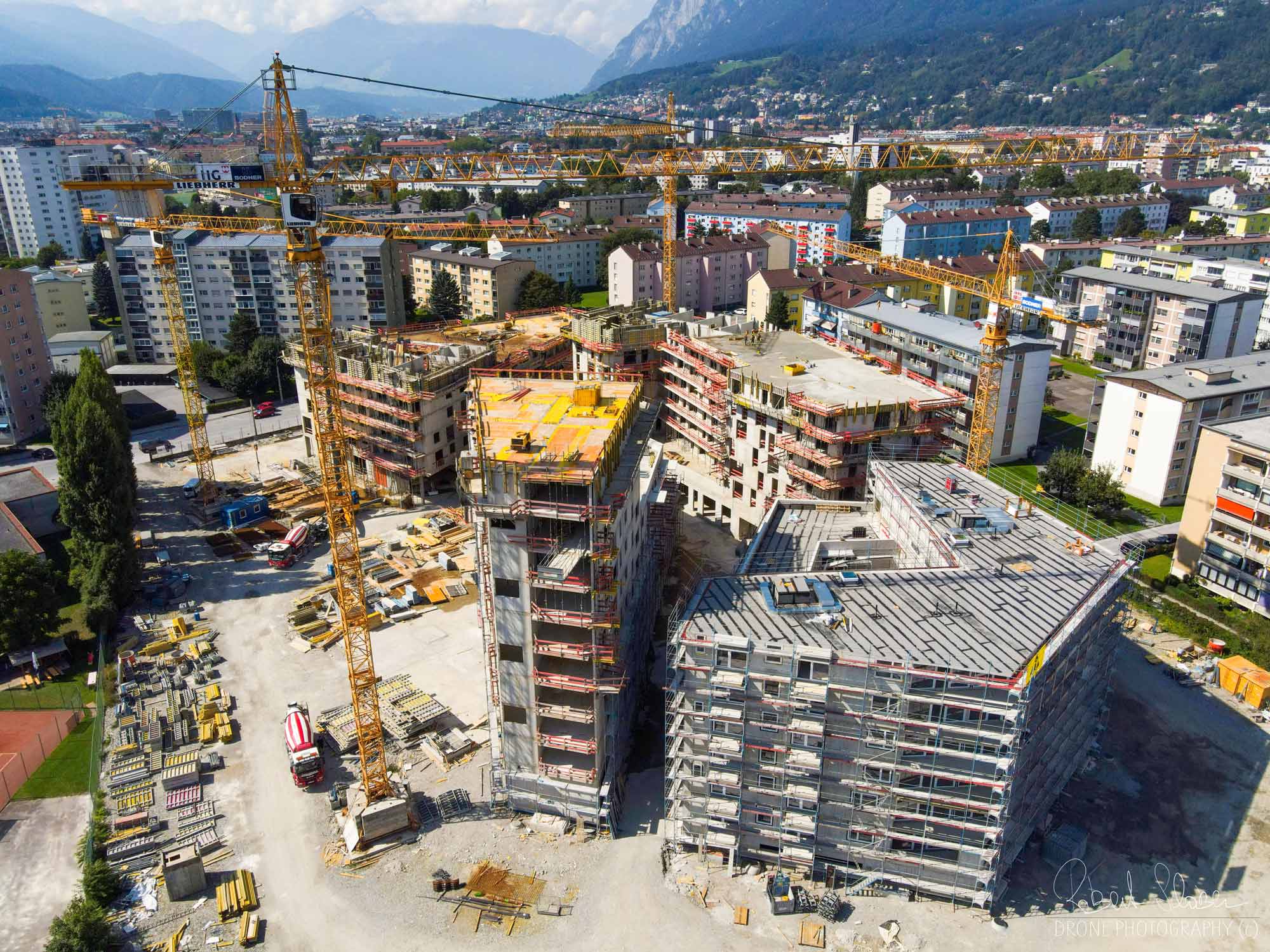The urban development project “Campagne-Reichenau” on the east side of Innsbruck is creating a smart city district with an area of about 84,000 m². Around 1,100 new homes are planned here, as well as numerous local providers of supplies and services, sports facilities and a community building. This is the first time in Innsbruck that a collaborative planning process has been used to develop a new urban district on the basis of a city council resolution. The process of developing the master plan involved not only local residents, but also clubs, schools and kindergartens in the area.
The aim is for Campagne-Reichenau to serve as an example of best practice for the creation of sustainable and inexpensive homes to a passive-house standard. Optimising the energy and economic aspects of the building envelopes is not the only priority here. In this smart city district the city authorities also will demonstrate intelligent structures for utilities and waste management, as well as pioneering transport and mobility solutions.
The long-term objective is to develop the area into a “zero-emission urban region” and to integrate it with the urban planning concepts of the City of Innsbruck, and the Tyrol Energy Strategy 2050. Key aspects of this include the reduction of greenhouse gas emissions, climate change adaptations, social sustainability, maximum energy efficiency, ecological quality and renewable energy sources as an essential component of the energy supply system.
Sustainable district development
Led by IIG (Innsbruck Immobilien GmbH & CoKG), working in cooperation with various partners1, innovative concepts for energy, utilities and waste management were developed for the new district, as well as appropriate mobility options. Key considerations included cost-efficiency in planning, construction and operation of the new buildings, and the formulation of multipliable, cost-effective and highly efficient solutions for construction and building services technology to meet passive-house standards for new construction.
Construction of the first section began in late autumn 2019. This consists of four buildings with a total of 307 apartments2 . Plans include a sustainable energy supply system for each of the four construction areas. The buildings will be heated by water/water-heat pump systems (using low-temperature heating systems for each construction area that release warmth through floor heating). The roofs will be fitted with photovoltaic systems designed to maximise the available potential. PV power will supply some of the electricity needed for ventilation and heat pumps. Domestic water heating (high temperature) uses district heating from the regional district heating supplier IKB, with a high proportion of industrial waste heat and bioenergy.
info-campagne.at/de/campagne-reichenau/campagne-reichenau/29-0.html
1 PROJECT PARTNERS: Innsbrucker Immobilien GmbH & CoKG (consortium leader), NEUE HEIMAT TIROL gemeinnützige WohnungsGmbH, Innsbrucker Kommunalbetriebe AG, University of Innsbruck – Department of Structural Engineering & Material Sciences and Department of Infrastructure
2 Two of the buildings are being constructed by Innsbrucker Immobiliengesellschaft (IIG) and Neue Heimat Tirol (NHT), respectively.
This project is part of the “Smart Cities Demo” programme of the Climate and Energy Fund.
